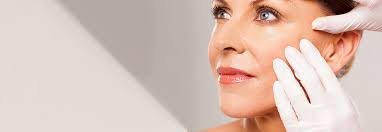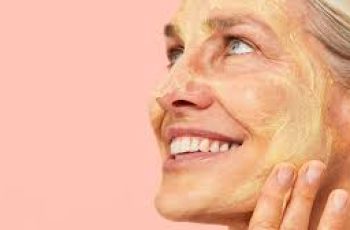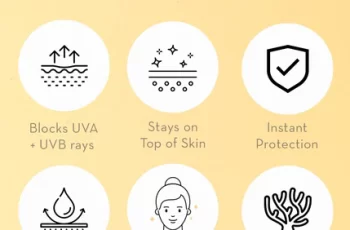
Which Wrinkle-Reducing Option Is Best for You?
Your skin is a window into your age, and wrinkles are one of the most telltale signs. It’s entirely normal for the lines on your face to increase as you add more birthday candles to the cake. “Wrinkles are the end result of collagen and elastin fiber breakdown,” says facial plastic and reconstructive surgeon Patrick J. Byrne, MD, chair of the Head and Neck Institute at Cleveland Clinic in Ohio. Genetics and skin type are two factors that are out of your control that can make you more prone to wrinkles, while lifestyle habits, like sun and pollution exposure or smoking, can speed up wrinkle formation, he says. Sleep position — namely, sleeping on your face — can also etch in lines, according to a study published in Aesthetic Surgery Journal.
How Botox and Other Wrinkle Reducers Work to Smooth Wrinkles
To stop wrinkles in their tracks, you might consider Botox or a similar injectable. Botox is the trademarked name for a catchall term dermatologists tend to use for botulinum toxin type A, injectables that are made from a toxin that comes from the Clostridium botulinum bacteria. (Yes, that bacteria also causes botulism, a condition that attacks the body’s nerves, per Mayo Clinic — but it’s rare for Botox injections to have this side effect.)
“This is the most potent neurotoxin known to man,” says Dr. Byrne. “The toxin travels into the synapses of the muscles and blocks the transmission of the impulse to the muscle.” When the toxin is present in the muscle, that muscle can’t contract around the synapse (the tiny gap between two nerve cells). That means the muscle is partially or fully paralyzed, and the result is that those expression lines are smoothed out. The treatments are temporary and may last from two to six months.
By stopping expression lines, you also prevent existing wrinkles from carving in deeper and more permanently. The start time is up to the patient, but some doctors don’t believe in using neurotoxins preventively. “If a patient doesn’t have a frown line and they tell me they want Botox so they’ll never get a wrinkle, I don’t treat them,” says Phillip R. Langsdon, MD, a facial plastic surgeon in Germantown, Tennessee, and past president of the American Academy of Facial Plastic and Reconstructive Surgery (AAFPRS).
But if you see that a crease from a facial expression doesn’t go away when your face is at rest, you’re at a point where a wrinkle has formed. It’s then that you may consider a neurotoxin.
Beyond Botox: A Look at Your Options
Nevertheless, you’re not limited to Botox. “Most people come in asking for Botox, as it has the most brand recognition,” says Dr. Langsdon. But there are four other brands that work in similar ways that you can ask your dermatologist about: Dysport, Xeomin, Jeuveau, and Daxxify. Daxxify is the newest among these options; the U.S. Food and Drug Administration approved the injectable for treating facial wrinkles in adults in September 2020.
What may surprise you: “The active agent for all of these isn’t just similar but is totally identical. Yet they each contain unique carrier proteins that diffuse through the tissue slightly differently,” says Byrne, who has also been a board member of the AAFPRS.
Here’s what to know about each injectable.
Botox
What It Is OnabotulinumtoxinA injections, aka Botox, are FDA-approved to temporarily treat moderate to severe frown lines, crow’s-feet, and forehead lines, according to the Botox Cosmetic website.
Who It’s Best For “Botox works very well in the crease between eyebrows, in crow’s feet, in the bunny lines on the sides of the nose, and forehead lines,” says Langsdon. A review published in Clinical, Cosmetic, and Investigational Dermatology in 2019 adds that Botox can be effective for marionette lines, which run vertically from the corners of the mouth to the chin; wrinkles around the lips; and the vertical bands in the neck — and the review notes that the results last for three to six months.
While Langsdon says Botox works well in any place it’s approved for use, he cautions that some people with low eyebrows can see their eyebrows drop lower if horizontal forehead lines are treated with any neurotoxin. “Sometimes you have to leave those lines alone,” he says. Your dermatologist or facial plastic surgeon will help guide you.
Disadvantages The results do not appear right away, which is important to keep in mind to help manage your expectations (and to properly plan treatment, if you’re preparing for a big event). Though the company says that the results may appear in 24 to 48 hours, “we tell patients to give it a week or two for the full effect,” Langsdon says. Also, because men have a greater muscle mass, they need higher doses of Botox to effectively reduce wrinkles, often double the effective dose used for women, per the Clinical, Cosmetic, and Investigational Dermatology review.
Dysport
What It Is AbobotulinumtoxinA, or Dysport, is an injectable that can smooth the frown lines between the eyebrows, according to Dysport’s website. Results show up within two to three days but can take up to a week.
Who It’s Best For Some doctors, like Manish Shah, MD, a board-certified plastic surgeon at Shah Aesthetic Surgery in Denver, have moved away from Botox. “I prefer to use Dysport,” Dr. Shah says. He points out that it lasts four months, allowing patients to visit the office just three times per year. Dysport itself says that the results may last even longer, up to five months in some patients.
There’s a financial advantage, too: If fewer appointments throughout the year are needed, the end result is that it costs less. That can actually yield better results because in that case “patients are more comfortable reliably coming in on a routine basis,” Shah says.
In addition, says Byrne, Dysport may travel a slightly greater distance through tissues. “That gives you an advantage in certain situations like crow’s feet, where there’s a broader treatment area,” he says.
Another possible benefit? A reduction in facial oiliness, pore size, and acne, since these neurotoxin injections may interfere with the function of sebaceous (oil) glands, per a review published in 2021 in Toxins. The review mentions that Dysport specifically may be one of the better options for this purpose. These injectables are not FDA-approved to treat acne, though, so consider it a potential bonus, not a guarantee. A randomized, double-blind trial published in 2021 in Dermatologic Surgery involving 50 participants found that Dysport injections in the forehead significantly reduced the oiliness in the area for six months. The study participants who received the treatment reported that they were very happy with the results.
Disadvantages Other injectables, such as Botox, may perform better when you’re looking to target a precise muscle (addressing the frown lines between the eyebrows, for instance), says Byrne. But that doesn’t mean you can’t get the results you’re looking for with Dysport: “These differences are so subtle, I don’t think it matters much,” he says.
Xeomin
What It Is IncobotulinumtoxinA, or Xeomin, is an injection that targets moderate to severe frown lines between the eyebrows, notes the Xeomin website.
Who It’s Best For Some people develop a tolerance for one of these injectables, making the treatments less effective over time. What makes Xeomin stand out is that “the protein coat on the toxin molecule is much less dense than on the other neurotoxins,” says Shah. If other injectables stop working for you, your doctor may turn to Xeomin.
Disadvantages Results appear in three to four days, according to the company, with maximum outcomes after 30 days. If you’re looking for the effects to appear faster (whether because of personal preference or an upcoming event), Xeomin may not be for you.
Also, though the company says that the benefits persist for three months, some doctors, including Shah, say that their patients note that it often lasts only two. “But when you’ve built up a tolerance to the others, two months seems like a good amount of time,” he says.
Jeuveau
What It Is PrabotulinumtoxinA, or Jeuveau, is the second-most recent neurotoxin injectable on the market, having been given FDA approval for the treatment of moderate to severe glabellar lines (the vertical “frown” lines between the brows) in 2019. “It’s the same particle size as Botox (900 kDa, or kilodaltons), which is considered the gold standard for efficacy,” says Shah. A double-blind, placebo-controlled study published in 2019 in Aesthetic Surgery Journal found that Jeuveau was just as effective as Botox at addressing forehead lines.
Who It’s Best For Jeuveau will interest the patient who’s interested in trying a new injectable. When it comes to any of these neurotoxins, “we have patients who strongly believe one or the other is better for them,” says Byrne. “Some believe one works more quickly, is more effective, or lasts longer than another. It’s a matter of personal preference, and we let patients choose.”
Disadvantages Though Jeuveau has been around for a few years at this point, “the data is limited, and we don’t have the years of experience that we do with Botox, Dysport, or Xeomin,” says Langsdon.
Daxxify
What It Is Daxxify, or daxibotulinumtoxinA-lanm, is the newest wrinkle reducer to the market. It’s approved to treat moderate-to-severe lines or wrinkles between the eyebrows. This area, known as the glabella, includes the corrugators and procerus muscles, per StatPearls. These are the muscles that pull “your eyebrows down as you scowl,” says Joshua Zeichner, MD, an associate professor and the director of cosmetic and clinical research in the department of dermatology at Mount Sinai Hospital in New York City.
Who It’s Best For One distinguishing factor between Daxxify and the other wrinkle reducers on this list is the results are likely to last the longest. In trials that Daxxify manufacturer Revance Therapeutics (PDF) submitted to the FDA that led to Daxxify’s approval, compared with placebo, 80 percent of participants saw improvements in facial lines at four months after treatment. Meanwhile, about half of participants saw improvements after six months. Some individuals even saw their results sustained after nine months.
This may sound desirable. But before opting for Daxxify, you want to be a more seasoned injectable neuromodulator user, so you know what you’re in for, Dr. Zeichner says.
“For first-time users, I would recommend a shorter-acting agent [than Daxxify] to make sure that you’re happy with the results,” says Zeichner. Daxxify, he added, “is a good option for people who are experienced, know what to expect, and like their results.”
Disadvantages In studies, Daxxify posed only mild side effects, such as drooping eyelids, headache, and facial asymmetry, to a minority of participants, Revance has reported. The main drawback is that because the results last so long, those who are unsatisfied with the treatment will need to wait longer than they would with another injectable for the effects to wear off, Zeichner notes.
What You’ll Pay for Smoother, Younger-Looking Skin
The American Society of Plastic Surgeons reports that the average cost among Dysport, Xeomin, Jeuveau, and Botox is $466, per their 2020 data. (That is the most recent number; prices are likely to be higher in some places.) Price points differ widely depending on the area being treated, how much of a wrinkle reduction is desired, and how many units of the product are injected. Prices also vary depending on the city or region and among individual doctors’ offices. The price of Daxxify has yet to be determined, as the injectable is not yet available in dermatologists’ offices; it’s expected in 2023.
Overall, “patient satisfaction is so high because they’re so popular. All of these agents will be effective when used in the right way,” says Byrne.
The Importance of Working With a Professional When Getting Botox and Similar Injectables
No matter which injectable wrinkle-reducer you opt for, the most important thing to do is to go to a knowledgeable doctor, which means a board-certified plastic surgeon or dermatologist. “You need a provider who knows what they’re doing, whom you trust and have a relationship with,” says Langsdon. Someone may offer a cheaper price, but you have to consider what a provider’s lack of experience may cost you in terms of your health and safety.
Alarmingly, reports cited in a study published in 2018 in Plastic Surgery suggest that some people are turning to DIY botulinum toxin treatments, self-injecting these agents via tutorials and facial muscle maps found on YouTube and elsewhere on the internet. This is not safe, the authors warn. Not only do you risk injecting the muscles incorrectly — there’s also a chance that the product you’re using may be counterfeit. The side effects of these DIY treatments can be permanent, including muscle paralysis, Bell’s palsy, and eye damage, notes the American Academy of Dermatology Association (AAD) — so this procedure is one that’s definitely best left to the professionals to administer.
How to Know if Your Dermatologist or Plastic Surgeon Is Legit
If you’re seeing a dermatologist, check that they’re certified with the American Board of Dermatology. The certification of facial plastic surgeons is through the American Board of Facial Plastic and Reconstructive Surgery, and you can search for a board-certified facial plastic surgeon in your area at AAFPRS.org. And the American Board of Medical Specialties also has a handy search tool on its website that lets you search for any doctor’s board credentials by first and last name and city and state.
Alternatively, you can check whether your provider is board-certified by using the free “Is My Doctor Board Certified?” tool from CertificationMatters.org.
What to Do Before You Undergo the Procedure
Before giving you the treatment, your dermatologist will schedule a consultation to discuss it, notes the AAD. During this consultation, be prepared to discuss your medical history, which will alert your provider to potential complications. Be sure to disclose any medications (including nonprescription medications) and supplements you take, whether you’re pregnant or planning to become pregnant, and your surgical history.
This consultation is also an opportunity for you to ask your dermatologist any questions you may want answered. The AAD suggests asking the provider how many procedures he or she has done, who is administering the injections, the cost, and the expected results. Your provider can also talk to you about other treatments that may be a better option for you, as well as whether combining certain treatments would deliver even better results.


